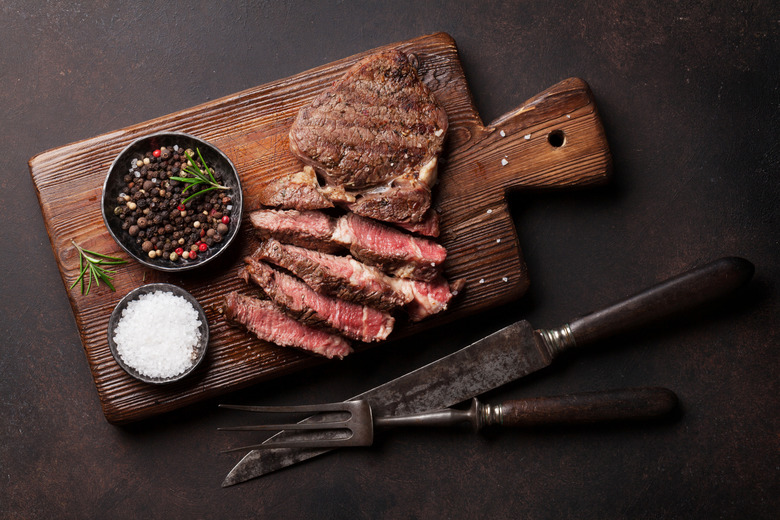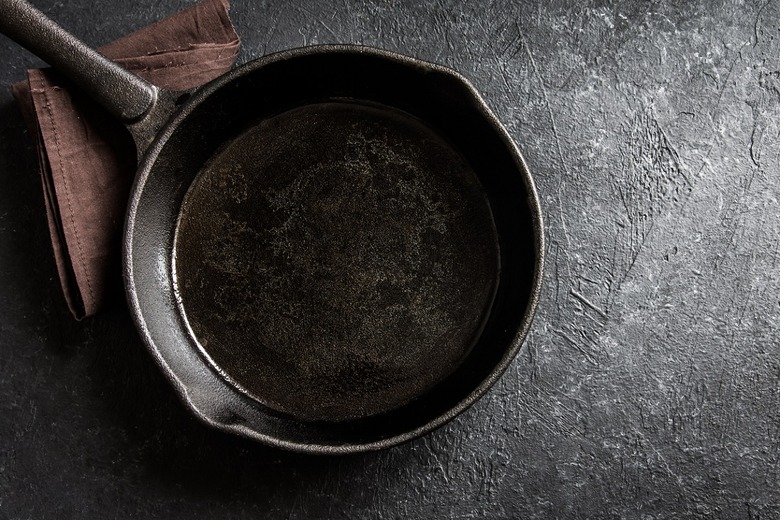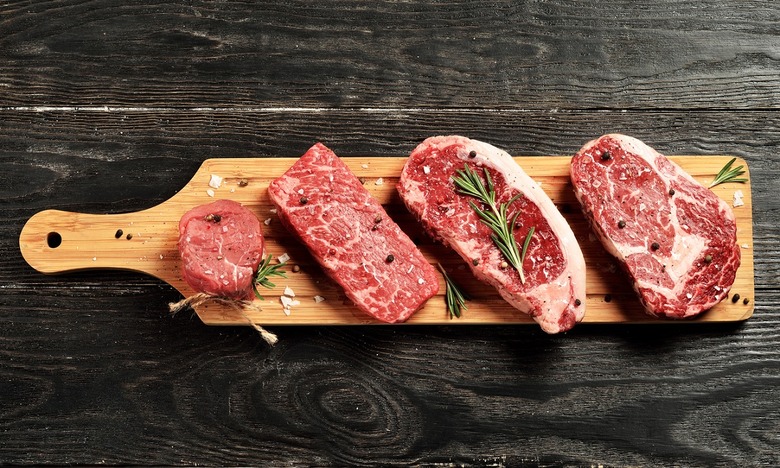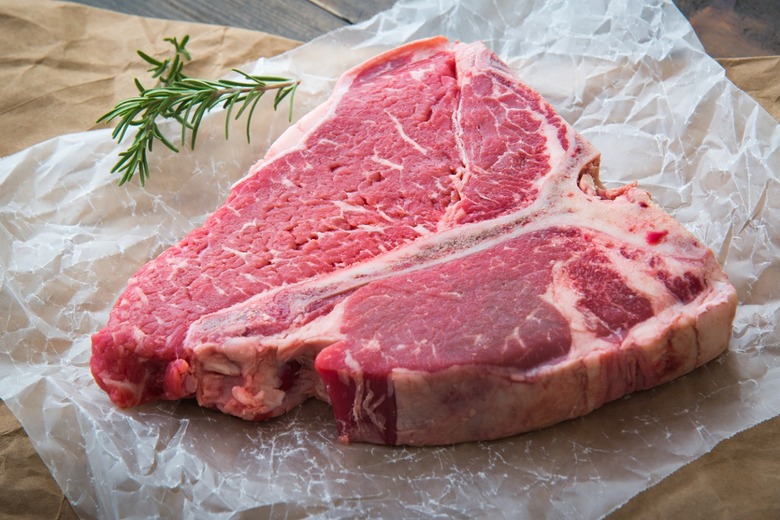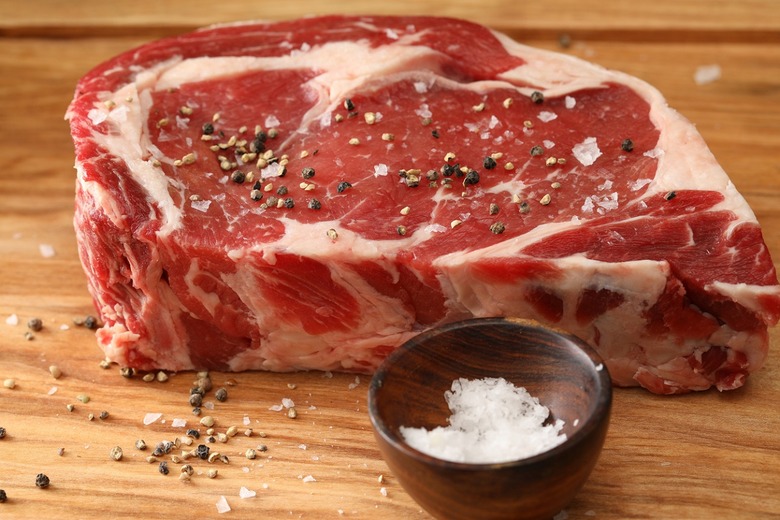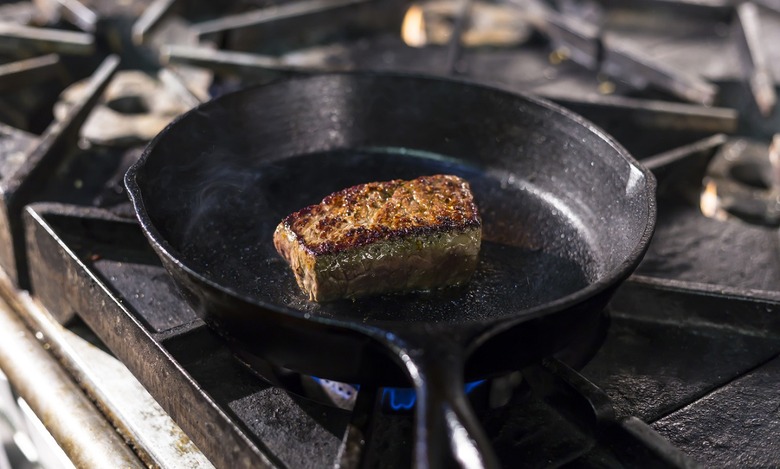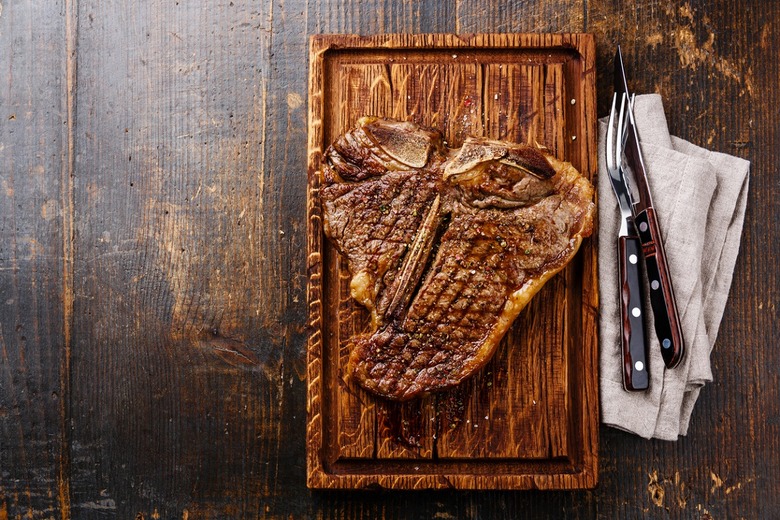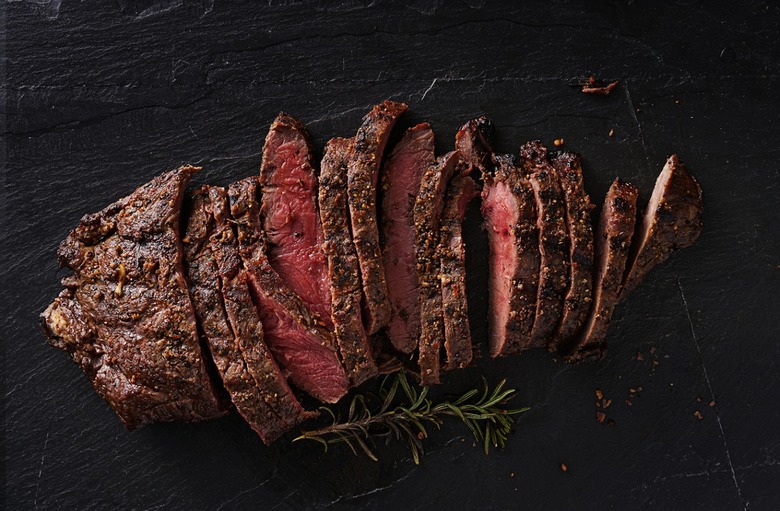How To Cook Steak Perfectly On The Stove Every Time
Steak is delicious, right? Savory and satisfying, a good steak is wonderful thing. Going out to a fancy steakhouse and ordering a rib-eye is all fine and dandy, but do you glean the same satisfaction from cooking steaks at home? You should.
There's nothing more frustrating than bringing home a lovely cut of meat, sitting down at the table, lifting a forkful to your mouth and feeling disappointed because your steak is overcooked, undercooked, chewy or bland. But this can be avoided! From choosing the right pan and correct cut to seasoning, cooking temperatures and slicing, every step is important. There are certain simple measures you should take every time to ensure every steak you cook is perfectly delicious.
Choose the right pan
If you aren't cooking your steak on a grill, it's important to turn to the correct pan to get the job done, and in this case that means cast iron. Thick, heavy and designed to retain heat, a cast-iron pan will ensure you get a fantastic sear and in turn a wonderful brown crust on the outside of your steak without overcooking the interior.
It's incredibly important to preheat cast iron — to get the best sear possible; your pan should be smoking hot before you have added any oil.
Choose the cut
The four most expensive cuts of steak are rib-eye, New York strip, tenderloin and porterhouse. These are the steaks you find most often on restaurant menus and certainly in steakhouses across the country. That's not to say you cannot grill a more inexpensive cut to perfection.
The important things to consider when selecting a steak are how you want to cook it, to what temperature, and how you're going to serve it. A bone-in rib-eye is a star cut and easily stands alone, needing only simple seasoning; other cuts lend themselves particularly well to hearty marinades, and others make for fabulous tacos. No matter which cut you choose, even if it is a cheaper one, you should still cook it with care and understanding.
Tempering?
Contrary to popular belief, countless culinary experiments and side-by-side comparisons seem to indicate that it is not essential to temper your steak — i.e., bring it to room temperature — before cooking. It's not a bad idea, though, and many cooks still swear by it.
More essential than a room-temperature steak is a dry one. If the surface of your steak is not dry before it hits the pan, you aren't going to get that desirable crust, so make sure you pat off any excess moisture with a paper towel!
Seasoning
One of the biggest differences between home cooking and restaurant food is the amount of salt used. Don't be afraid of making it rain! You want to season liberally enough to season the entire steak — the salt sits on the outside, but you want the whole thing to be delicious, right? Kosher salt is the best salt to turn to when seasoning; it's the most commonly used all-purpose salt in almost all kitchens. The larger, coarser grains make it easier to season evenly, which is important to do when seasoning a larger surface area such as a steak.
Oil your steak before seasoning with salt and pepper — this will help the seasonings stick to the surface and also eliminate the need for oil in the pan.
The moment of cooking
Add your seasoned steak to your very hot cast-iron pan (if you are not grilling your steak) and leave it to develop a nice crust before flipping. Back in the da,y everyone was constantly told to only flip a steak once during the cooking process. Like tempering, this is not widely considered to be wrong. Cooking times vary hugely depending on the size and cut of steak. Unless you are a pro at cooking steak, the most reliable way to gauge doneness is with a meat thermometer. There's absolutely no shame in using a meat thermometer to help you reach the right internal temp. Just make sure you don't repeatedly stab at your steak. A few temp checks is fine, but try not to turn your steak into a pincushion.
Remove your steak before it reaches the final temperature you are aiming for — it will keep cooking a bit once it's off the heat. Remove your steak when it reaches the desired internal temp:
Rare: 125FMedium rare: 130F
Medium: 140F
Well done: 160F
Allow it to rest
Once you remove your meat from the pan, it is time to rest. Place your steak on a plate and lightly cover it with some aluminum foil and leave it for (ideally) half of its cooking time, or at least 5 minutes if you really cannot wait. This gives the juices inside the meat a chance to settle back into the steak and evenly redistribute — cut into your steak too soon and they will all run out, leaving you with a disappointingly dry steak.
The right way to slice it
The last step before eating is the slicing. Carefully slice against the grain to ensure maximum tenderness. Doing so results in shorter muscle fibers, which will ensure that each mouthful is buttery and delicious.
So there you have it. Cooking steak need not be daunting of difficult. As long as you are armed with the right knowledge and you cook thoughtfully and with care, a perfectly cooked steak is totally within your grasp. Learn how to choose the very best steak using The Ultimate Steak Guide.
More From The Daily Meal:
19 Marinades That Will Up Your Steak Game
Restaurant Secrets Every Home Cook Should Know
How to Cook Spaghetti Perfectly Every Time
